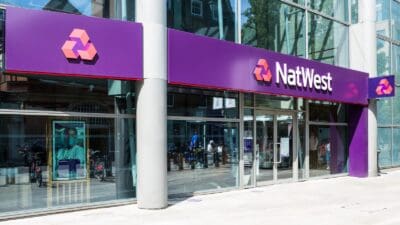Last Thursday I travelled from the Midlands to the outskirts of Manchester to listen to a group of four well-known and highly regarded investors impart their knowledge, focusing on the subject of quality investing. The presenters were:
- Keith Ashford-Lord: in a career spanning over 30 years in equity markets, he was one of the leading lights responsible for research and writing the monthly publication Analyst between 1997 and 2008. He subsequently founded Sanford Deland Asset Management in 2010. He now manages the ConBrio Sanford DeLand UK Buffettology Fund, based on Warren Buffett’s investment philosophy, which has been a top quartile performer in the IA UK All Companies sector since its launch in March 2011.
- Leon Boros: a chartered accountant who trained with Ernst & Young and is a founding director of Equity Strategies, a deal-origination corporate finance firm. He is an active private investor and an ISA millionaire, despite having invested only a fraction of his annual allowance. He has achieved an annualised return on his investments of 16.1% p.a. over 21 years. His investing style has a particular emphasis on companies generating high profit margins, strong cash flow and high returns on tangible assets.
- Ed Page-Croft: with a background in wealth management and engineering, having worked as an asset manager at Goldman Sachs and for a family office, he went on to found Stockopedia. Edward is also a columnist for This Is Money and is regularly published by Thomson Reuters, Business Insider and the London Stock Exchange’s Private Investor Magazine. He is the author of two books: How to Make Money in Value Stocks and How to Make Money in Dividend Stocks.
- Roger Lawson: after retiring 20 years ago, he has focused on managing his own large investment portfolio. He is also deputy chairman of ShareSoc and writes/edits the Society’s newsletters. He is leading the Society’s campaign to improve the rights of shareholders: to ensure investors have voting rights and can vote. He has a first degree in Engineering, a Masters in Business Administration and a wide business background.
That’s quite a panel, and one that I have a lot of respect for. So, what did they say about what they looked for, when on the hunt for quality in the market?
A Moat – High Barriers to Entry
The general consensus of the panel was that quality businesses not only have a moat, but one filled with sharks and a drawbridge, just in case other companies came around looking to make money in the same space. Investors should look for protected intellectual property rights (IPR). An example of this was Rotork (LSE: ROR) – its valves, actuators and control systems have been found in almost every new gas plant, oil rig and refiner for the last 30 years. They are considered the industry standard, and given what could go wrong should an inferior part be used and subsequently fail, customers keep coming back, creating plenty of repeat business.
High Switching Costs
Panellists also cited the advantage of high switching costs. One stock mentioned here was EMIS (LSE: EMIS). For those not familiar with the group, it is a UK-based healthcare company, engaged in connected healthcare software and services and designs computer software for healthcare professions, mainly GPs and pharmacists. Here, the company becomes entrenched in customers’ daily business by supplying a system used on a daily basis, making it almost too difficult for customers to move away. This gives it pricing power – the ability to pass on price increases to customers over time and allowing it to maintain its position in the top 10% of the Healthcare and equipment services sector of the market, when measured against ROCE (return on capital employed), ROE (return on equity) and operating margin.
When to Buy – A Margin of Safety
An interesting point was also made when the discussion turned to deciding when to buy. The audience were shown a chart, which contained a line representing the intrinsic value of the share, and another line representing the share price. The intrinsic value line was surrounded by a shaded zone at either side and gave investors a clue as to when the stock was cheap and when it was expensive. As one can imagine, the share price would rise and fall below the intrinsic value line a number of times over time. The trick was having the discipline to be patient until you could buy within your margin of safety.
One example from the panel was when Keith Ashford-Lord snapped up stockbroker Hargreaves Lansdown (LSE: HL) when the share price dipped under 900p last year. With the shares now exchanging hands at over 1200p, that looks like a rather smart move.
Last, But Not Least…
Finally, I felt that it was also mentioning the top two shares from a screen that was prepared by Ed Page-Croft using his Stockopedia site. These were Next (LSE: NXT) and Bioventix (LSE: BVXP).
Aside from feeling a little smug (I own both), it was interesting to note that these two companies couldn’t be further apart in terms of size (Next carries more debt than the market cap of Bioventix) or their line of business, but it did strike me that investors can build a portfolio of quality investments across a diverse range of sectors and hold them over the long term. If you don’t believe me, take a look at the three-year chart below (readers should also note that Bioventix has more than tripled over the last 3 years but the data was lost when it moved from the ISDX market last year).







